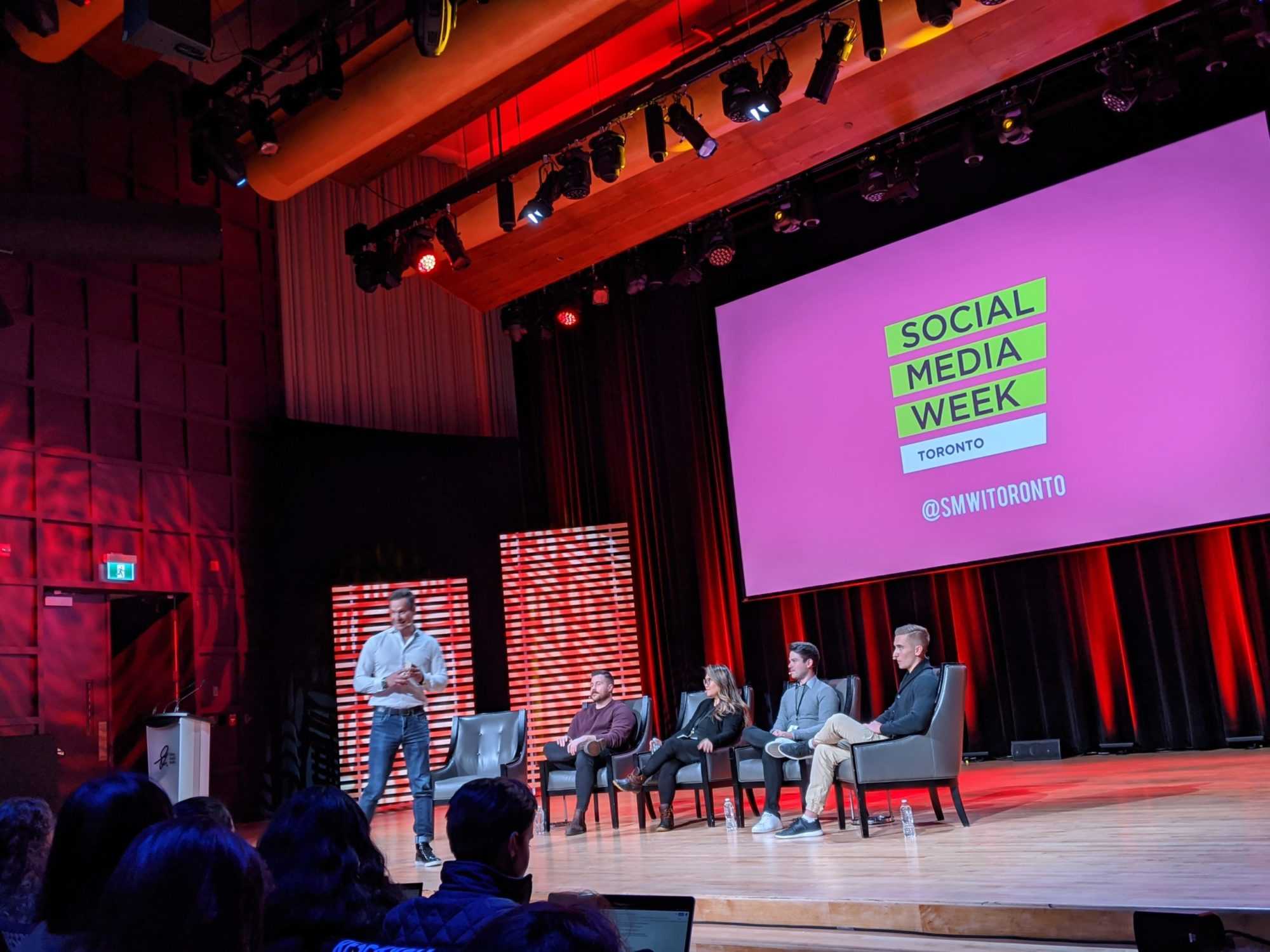BY CHRISTINA GWIRA
On Wednesday, November 13th, 2019, I attended Social Media Week Toronto (#SMWTO) for the first time. The three-day event looked at trends, panels and more all related to social media and how we’re using it in Canada, for the most part. I was especially excited to attend the second day, as it focused on social media networks that aren’t as talked about as Facebook and Instagram. I was very pleased that it was a day that I learned A LOT in respect to social media giants Twitter and Pinterest, as well as rising star TikTok.
The event took place at CBC’s Glenn Gould Studio at 250 Front Street West, in Toronto, Ontario. In my opinion, the format of the event was compact, however, the information provided at each session packed a much better punch than the goodie bag, hands down. There were no pens, stickers, pop sockets or notebooks. While I love a full swag bag, I’d much rather learn new things, connect with like-minded individuals and leave an event excited to immediately put to use what I’ve learned. This year’s #SWMTO did that for me. Here are some of the things that I learned from each of the segments that I attended.
Twitter: How to launch
Michelle Slater, Head of Business Marketing at Twitter gave an insightful talk about how to properly launch using Twitter. The topic was one that I find can be used for business and brands, irrespective of their size. She gave tips as well as successful examples on how to reveal your latest product or service to the world using the world’s “listening network”. She provided us with the five stages to a successful reveal, with the first step being to learn about what the Twitterverse is saying. Is there a need for your product or service? Is there an area where your product or service can help? These are all critical for success. Her case studies included the no name campaign; Burger King vs. Wendys for the possible relaunch of their spicy chicken nuggets as well as Director X and Samsung’s collaboration for their newly released Samsung Note.
Pinterest: The world’s inspiration company
I’d heard a lot about Pinterest, but have never made the commitment to actually use the platform seriously. I was grateful to have attended the talk, because it spoke about something that is super important when it comes to any form of social network: creating inspiring content. Pinterest’s main goal is to become “the world’s inspiration company”; the place you go before you do or act on something. Heading to the Maldives? Create a Pinterest board for your travel outfits? Baby on the way? Create a Pinterest board for ways to decorate baby’s room. Pinterest shared with us that there are – again – five main aspects for creating content. I’m not going to bore you with another list (maybe a separate article?); however, I found the talk super insightful. Did it compel me to create an account? It didn’t, but it definitely provided me with more clarity as to how I can use the platform for my business, which is always a good thing.
TikTok: Trust the creators
Tiktok’s panel discussion really focused on two things: the platform is new and growing, and that business owners should trust creators. The immediate call-to-action that was provided from the panel was simple: download and use the app. That was it. Did I do that… no, because I had already downloaded the app prior to attending the conference. It was good to hear about the TikTok platform not just from the professionals who created the marketing campaigns on it, but also from the creators who used the platform and had grown their own audiences organically. One thing that I’ll give to TikTok is that the tools that they provide you to create photos and videos are amazing. So amazing, that the day after the conference, it was announced that Instagram was releasing a similar concept called Instagram Reel to users in Brazil. I think that TikTok is on to something, but right now, it’s chock-filled with prepubescent teens.
In closing, I will definitely be going back and attending #SMWTO in 2020. Social media is an ever-changing beast. With the information that I learned at the event, I’d say that as a business owner, marketing professional or budding influencer, #SMWTO should be on your conference hit list for the next decade that is upon us.

